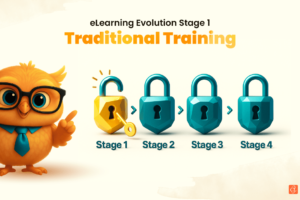
Are Formative Assessments the Key to Unlocking Better Outcomes in K-12 Learning?
Yes, digital learning platforms have made formative assessments more accessible, efficient, and engaging for both teachers and students. But that isn’t the only reason for the rising use of this type of evaluation in K-12 education. Unlike summative assessments, which evaluate learning at the end of a unit or course, formative assessments are ongoing, diagnostic evaluations designed to monitor student learning and provide continuous feedback. They serve as the compass guiding both students and teachers through the learning journey, offering real-time insights into what students understand and where they might be struggling.
This continuous feedback loop enables immediate adjustments to instruction, personalized support, and ultimately, a more impactful learning experience. The central question we need to explore here is: can these ongoing checks truly drive better student outcomes in K-12 learning?
Why Formative Assessments Matter
Research has proven beyond a doubt that formative assessments can significantly improve student achievement, while promoting self-learning and fostering a more inclusive educational environment. Studies also reveal that student engagement and feedback quality and immediacy determine the effectiveness of such evaluation. K-12 publishers can play a crucial role in ensuring both engagement and high-quality real-time feedback through AI-powered digital assessment tools.
Furthermore, formative assessment tools are instrumental in identifying individual learning gaps. A student struggling with a particular concept can be identified early, allowing the teacher to provide targeted support or differentiated instruction. This personalization of learning is crucial in addressing diverse needs within a classroom. By understanding exactly where each student stands, educators can tailor their approach, ensuring no student is left behind and every student is challenged appropriately. This continuous feedback loop fosters a growth mindset in students, encouraging them to see mistakes as opportunities for learning rather than failures.
Role of K-12 Publishers
The effectiveness of formative assessments is significantly enhanced through their seamless integration into educational content. This is where K-12 publishers play a pivotal role by embracing digital learning platforms and publishing solutions that embed a variety of assessments directly within the lesson plan. Instead of assessments being an add-on, they become an intrinsic part of the learning flow.
Consider a digital textbook that, after explaining a new concept, immediately presents a short, interactive quiz. These embedded assessments are often powered by sophisticated online assessment tools, which can range from multiple-choice questions and drag-and-drop activities to more complex simulations and open-ended responses.
Crucially, these embedded assessments can be designed to align precisely with learning standards and specific instructional goals with AI-powered assessment authoring tools. This ensures that the feedback generated is directly relevant to the curriculum and helps teachers gauge mastery of specific objectives.
K-12 publishers are no longer just content providers; they are becoming architects of assessment-driven learning experiences, powering educators with the integrated digital tools for formative assessment they need to effectively monitor and guide student progress.
Driving Better Outcomes
The ultimate promise of formative assessment tools is their ability to drive measurable improvements. This is achieved primarily through the intelligent use of learning analytics. Modern digital assessment tools for K-12 education generate rich data on student performance, highlighting areas of strength and weakness, individual learning patterns, and much more. This data empowers teachers to make informed decisions about their instruction, pinpointing exactly where to focus their efforts for maximum impact.
Schools that have strategically implemented robust formative assessment frameworks, leveraging sophisticated digital assessment tools, report significant improvements in student engagement, higher test scores on summative assessments, and a reduction in learning gaps. In fact, research has shown that integrated formative assessments can increase student proficiency by an average of 12%. These improvements are not accidental. They are a direct result of the continuous feedback loop fostering a culture of iterative improvement, where teaching and learning strategies are constantly refined based on real-time data.
Key Takeaways
The time to capture the opportunity presented by formative assessments is now. The market for such assessments, valued at $3.9 billion in 2023, is projected to rise to $6.01 billion by 2032. K-12 publishers that integrate such assessment tools in their digital learning platforms will effectively differentiate their publishing solutions from the rest. They will power educational institutions with not just flexible testing mechanisms but powerful pedagogical tools that support continuous improvement for both students and educators. By providing real-time feedback, enabling personalized instruction, and illuminating learning gaps, they empower teachers to be more responsive and students to be more self-aware learners. And it doesn’t hurt that offering online assessment tools with the power of personalization drives better adoptions.
Ready to embed these assessments directly into the curriculum and ensure their alignment with learning standards? Build smarter, outcome-focused content with MagicBox. Contact us today to learn how.
Source link




